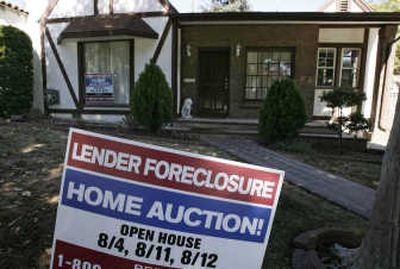Lenders tighten standards

WASHINGTON – More banks have tightened lending standards on home mortgages, the Federal Reserve said Monday in the latest sign of fallout from a spreading credit crisis.
The Fed said many banks reported tighter standards for traditional prime mortgages, nontraditional mortgages such as “interest only” loans and subprime mortgages, those offered to borrowers with weak credit histories.
The Fed survey, conducted in early October, found that 41 percent of banks responding said they had tightened loan standards either “considerably” or “somewhat” for prime residential mortgages, those offered to borrowers with strong credit histories.
The 41 percent figure was up from about 15 percent of banks who said they were tightening standards on prime mortgages in the last survey in July. The Fed’s survey covered 49 banks, including many of the nation’s largest. These banks account for about 75 percent of all residential real estate loans on the books of commercial banks.
The Fed’s quarterly survey of senior loan officers found that 60 percent of the banks that offered nontraditional mortgages had tightened lending standards, up from 40 percent in the July survey. The Fed’s definition of nontraditional mortgages covers such products as interest-only loans and “Alt-A” mortgages that require limited verification of income.
The survey found that 56 percent of banks still offering subprime mortgages tightened standards in the latest survey. However, the survey said 40 of the 49 banks surveyed said they are no longer offering subprime mortgages. Of the nine banks that are still providing such loans, five said they had tightened standards while four said lending standards were basically unchanged.
The credit crisis began with rising defaults in the market for subprime loans. Those defaults have cost billions of dollars of losses and are expected to exact an even higher toll as an estimated 2 million subprime mortgages reset to sharply higher rates through the end of 2008.
Financial markets have been roiled since August with worries about how much bigger the losses will become. Citigroup Inc., the nation’s largest bank, announced on Sunday the departure of Charles Prince, its chairman and chief executive officer, and estimated that it would take additional losses of $8 billion to $11 billion. Those losses would come on top of $6.5 billion in credit-related losses in the third quarter.